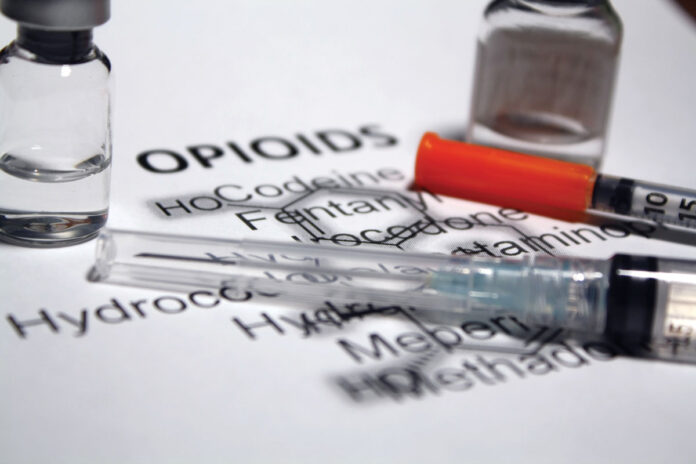Nearly 500,000 people died from opioid overdoses between 1999 and 2019, according to the Centers For Disease Control and Prevention. The first 15 years were marked by increased prescriptions and a rapid increase in heroin use, but the most recent wave of deaths involve opioids like fentanyl, a powerful synthetic drug that is 50 to 100 times stronger than morphine.
Jeanne McAlister says that recent wave is a larger problem than anything she has seen before in her four decades as Chief Executive Officer at McAlister Institute for Treatment and Education.
“The thing that surprises me is the number of people who come into our facilities using fentanyl, even knowing it’s deadly. I don’t understand why doctors make it so accessible,” McAlister said.
Speaking from experience, McAlister said she was recently given a prescription for painkillers even after she informed the doctor she is a recovering addict and did not want the prescription. She was later informed she had two refills of the prescription waiting to be picked up.
“When you’re dealing with people with an addictive nature, even an innocent prescription can be problematic,” McAlister said.
The hyperlocal use trends from neighborhood to neighborhood no longer exist, she said, in part because prescription drugs can be had anywhere.
“At one time, East County was full of meth addicts, it was a speed town and Crest was the capital. The closer you got to the border it was heroin; farther up the coast people had cocaine. Now, everybody has everything. I don’t see it regionalized anymore but I do see this huge surge in fentanyl and it is everywhere, cheaper than heroin,” McAlister said.
Neighborhood is no longer a factor; neither is age.
“Some of the kids in our 30-day program don’t want to go back home because everyone they live with is on something,” McAlister said.
Repeatedly, clients tell her they started with marijuana. Legalized for recreational use in California in 2016, the drug is openly being used around adolescents, she said, with drug use passed down from one generation to the next.
“I don’t think people recognize what they teach their children is: in order to have fun you have to put some drug in your body. I wish they would have parties without any use, show kids how to have fun without having to put something in their system,” McAlister said.
Often, she said, parents have easily accessible painkiller prescriptions that kids can easily access. The behavior patterns of having fun events where people are inebriated, coupled with easily accessible prescription drugs is a recipe for misuse.
“I get frustrated with pharmaceutical companies because they make big bucks off of people,” McAlister said.
Opioid manufacturer Purdue Pharma was federally convicted in 2020 of supplying kickbacks to providers who prescribed their products in exchange for compensation but McAlister said she still believes some doctors prescribe too freely.
Every time she goes to the doctor, she said, she is identified as ‘the lady who won’t take prescriptions,’ and although she knows she is making personal choices conducive to maintaining sobriety, she would like medical professionals to issue fewer addictive prescriptions.
The biggest solution to the problem, she said, is education.
“More education has to happen. If people could see what it looks like when someone overdoses, they might change their minds about addiction and the nature of an addict. They need to learn it is not just about the person, it is about dealing with the drug,” McAlister said.
Secondly, more people need to get into recovery and take steps to maintain their recovery.
“I’ve got 65 years clean and sober— there’s not enough emphasis put on the fact that recovery works. Nobody decides to be an addict. I wish more people could see addiction is a disease that needs treatment,” McAlister said.
Society, she said, often presents addiction in a different light than breast cancer or alcoholism but they are all diseases that require treatment.
Narcan, a prescription medicine used to treat an opioid overdose emergency, should be “everywhere” she said.
“Everybody should have it. We give it to all our clients, even the ones that don’t stay with us. I give it to parents, everyone. People are dying from addiction and we need to be prepared for that,” McAlister said.
Finally, she said, success stories need to be celebrated as much as what she calls “all the Hollywood” ugly stories.
“There are so many people in high positions with some recovery time under their belt, so many with 40 or 50 years clean. That’s important to see,” McAlister said.















